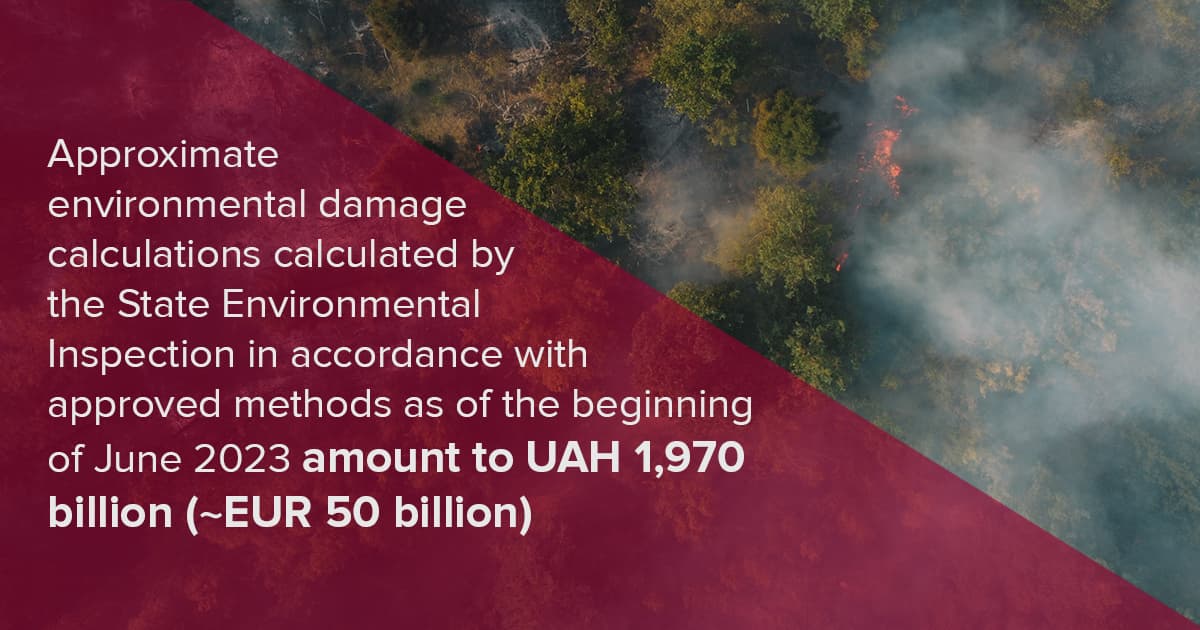Russia's military aggression against Ukraine has been going on for 15 months. The war so far killed tens of thousands of Ukrainians, displaced millions of citizens, shredded peaceful communities to dust, severely damaged the economy and caused untold environmental damage. Sustainability, let alone sustainable development, truly looks different. Ongoing monitoring of the war in Ukraine undertaken by the UN Environment Programme (UNEP) points to a toxic legacy for generations of Ukrainians to come.
As the war is ongoing, we can’t know the full range and severity of environmental consequences as it will require continued access, verification and assessment. What can be sure of is that many thousands of already documented incidents of land, air and water pollution and the degradation of ecosystems will unfortunately only go one way – up.
UNEP, the environment authority within the global UN system, is supporting the Government of Ukraine on remote environmental impact monitoring and plans to expand its field-level impact assessments despite the vast geographical spread and patchy access to areas of reported incidents. Two Ukrainian environmental damage monitoring sites Ecodozor and EcoZagroza are recommended sources for deeper and visual analysis of recorded impacts.
As we documented in our 2022 Chronicles Russia’s invasion continues to yield massive destruction of Ukrainian nature, ecosystems and ecosystem services many communities rely on including water infrastructure e.g. pumping stations, sewage facilities and purification plants. The indiscriminate attacks also continue to cause significant damage to industrial facilities, warehouses and factories with some storing a range of hazardous substances ranging from plastics, volatile organic compounds and ammonia. Hazardous substances have been released from explosions in agro-industrial storage facilities holding fertiliser and nitric acid.
Many reports document impacts on large livestock farms, where killed livestock carcasses pose a serious public health risk. Satellite imagery and drone footage has also shown a significant increase of fires in various nature reserves and protected areas, as well as forested areas following missile strikes, artillery bombardments and intentional arson by russian soldiers.
In the urban environments e.g. Luhansk, Donetsk, Kherson, Kharkiv, Mariopol and Kyiv the clean-up of destroyed housing will bring its own challenges, with debris and dust likely to be mixed with hazardous materials - particularly lead, radon and asbestos.
As documented daily on our news and social media feeds - the pollution and waste from extensive use of land, air and sea-based weapons in rural and urban areas, including thousands of destroyed and discarded military vehicles and equipment, poses a costly clean-up challenge.

Due to air, waste, soil and water damage and documented cases are handed to national and international law enforcement agencies, as part of an effort to hold russia accountable and secure damages in court for wanton environmental damage.
From a governance view the direct impact of military operations on the environment has also led to a breakdown in environmental management and regulation across impacted regions. The ongoing war has made it difficult for Ukrainian and international environmental agencies to monitor and enforce environmental regulations and incidents of illegal logging, poaching, and other environmental crimes have increased.
It is essential that Russia is held criminally liable also for its environmental crimes committed in Ukraine. Meanwhile Ukraine is deeply appreciating international community efforts to mitigate the environmental impact of the war and support the recovery and reconstruction of the region's environment.
"The world must be aware of the full scale of the threat to Ukraine's ecological system and the risks it poses to other countries due to russian aggression. That is why this issue should be a subject of intensified discussion on all international platforms.Today, it is crucial for all of us to ensure that the voice of Ukraine resonates even louder and that as many partners as possible unite around the protection of our environment."
(Ruslan Strilets, Minister of Environmental Protection and Natural Resources of Ukraine)
Finally, a historical perspective on the environmental costs of war makes for painful reading and reflection on what the future might hold. World War I, II, Korea and Vietnam all left reminders of destroyed, scarred, poisoned and still mined landscapes. The sheer volume of missiles and artillery shells hitting Ukrainian farmlands also raises the potential of heavy metals entering the food chain with possible higher rates of cancer and disorders resulting from water and soil contamination for decades to come. Ukraine with its incredible nature needs to win this war to start rebuilding, healing and once again safely enjoying its forests, fields, rivers, parks and ecosystems.
Everything will be Ukraine!